Pioneering police tactics: From wildfires to standoffs, UAVs are transforming RI policing
The state troopers' largest drone buzzes over the ramparts of Fort Adams in Newport.
From its hover about 100 feet above, the $30,000 remote-controlled quad-copter begins an angled descent through light fog.
Disappearing behind the fort's southern walls, it settles onto an orange circular helipad nestled in the grass.
The landing zone is part of a miniature heliport operated by five members of the Rhode Island State Police Unmanned Aircraft Systems Unit.
The unit's presence at Fort Adams on this recent summer morning demonstrates just one of the many ways that drones are contributing to police operations across Rhode Island, especially over the last two years.
More: Should police wear body cameras in schools? Why the issue has become a battleground.
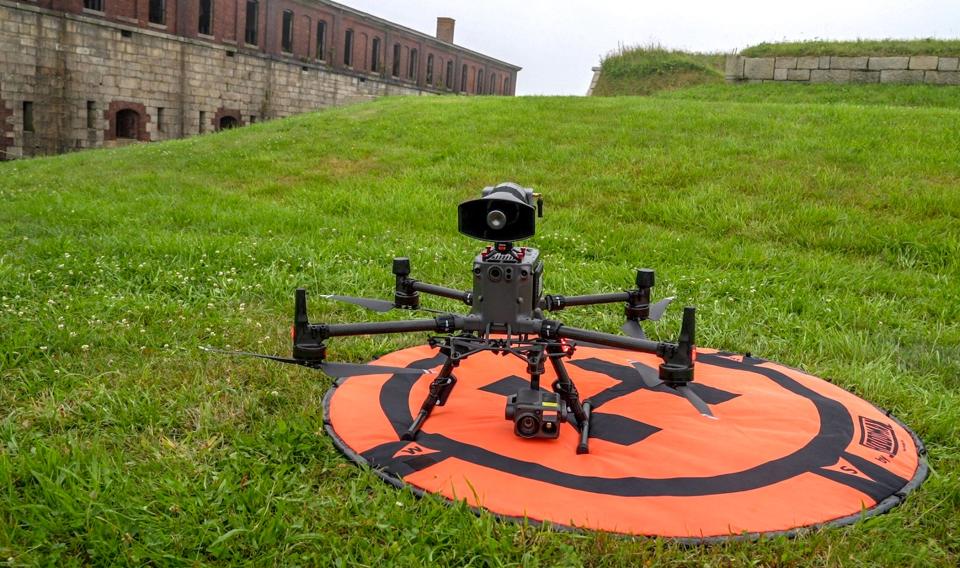
Drones, known more formally as UAVs – unmanned aerial vehicles – help Rhode Island police hunt fugitives, search for missing people and victims, investigate shootings and reopen highways more quickly after automobile crashes.
During a standoff, police can pilot certain drones into a house, find a suspected gunman and establish communication.
Drones equipped with speakers can help police issue commands. Drones equipped with thermal-sensing technology can help detect a person lost in the woods.
During wildfires this past spring in Exeter, heat-sensing tech on the state police drones helped firefighters see through walls of smoke and develop strategies based on where fires were burning most fiercely.
On this occasion at Fort Adams, the state police drone pilots were finalizing their flight plans for the Newport Folk Festival last weekend; the team provided aerial security assistance for that event and will do the same for the Newport Jazz Festival this weekend.
"It is a very helpful and useful tool," said state police Col. Darnell S. Weaver.
More: Rhode Island school districts have spent millions on safety upgrades. Here's what they've bought.
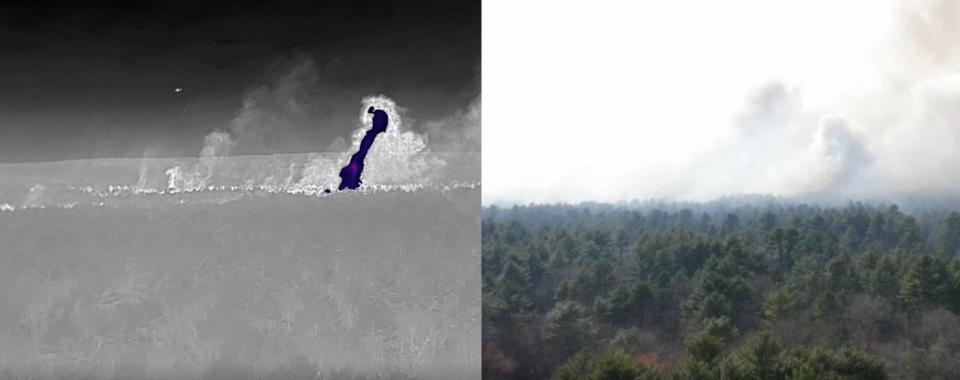
In standoffs, drones serve as eyes and ears of police, without physical risk
For two years, the Providence Police Department's Special Response Unit has been working on tactics that involve drone flights indoors, according to the assistant commander of SWAT-type tactical team, Lt. Patrick Potter.
The tactical team, Potter said, anticipates standoff situations where it might deploy a drone as part of a deliberate de-escalation strategy.
"It's something we're constantly thinking about now," Potter said.
The drone can fly through open windows and doorways and halls. Its speakers and microphones can help a person talk to police and vice versa, said Potter.
He likens the machine to a "flying cellphone."
More: Providence's network of license plate cameras set for big expansion
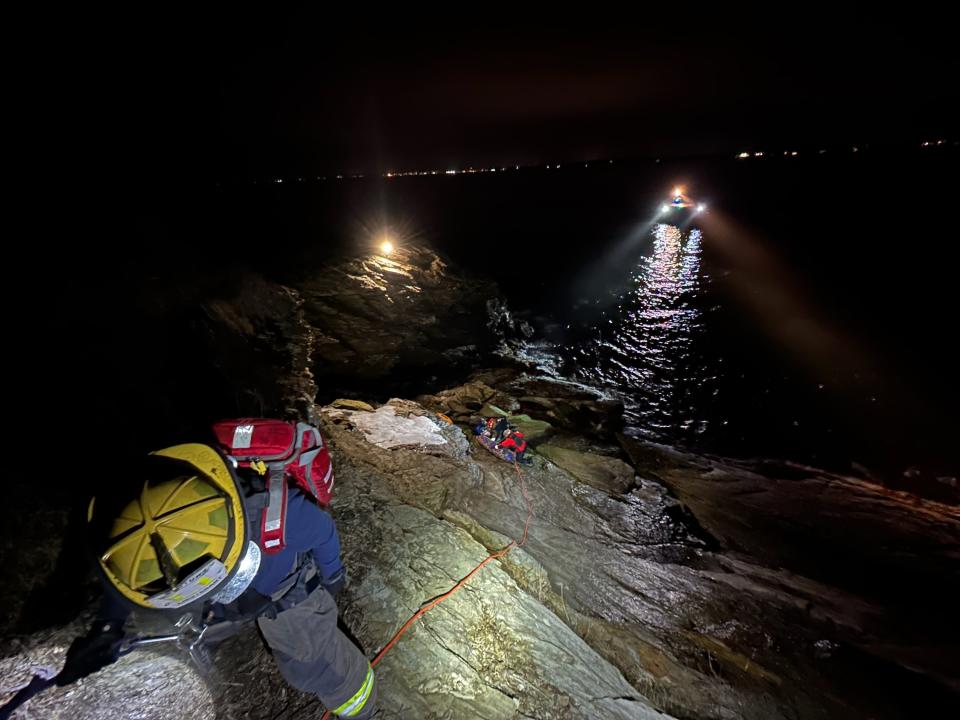
In certain dangerous situations, said Potter, relying on a drone for eyes and ears – rather than a police officer – is now a viable option.
Potter and others, including Cranston's police chief, Col. Michael J. Winquist, and Woonsocket police Chief Thomas F. Oates III, say that drone-supported searches can also save valuable time in situations where police face a perceived threat that doesn't actually exist.
In late May, an 8-year-old boy fled Citizens Memorial Elementary School in Woonsocket as students were dismissed, said Oates.
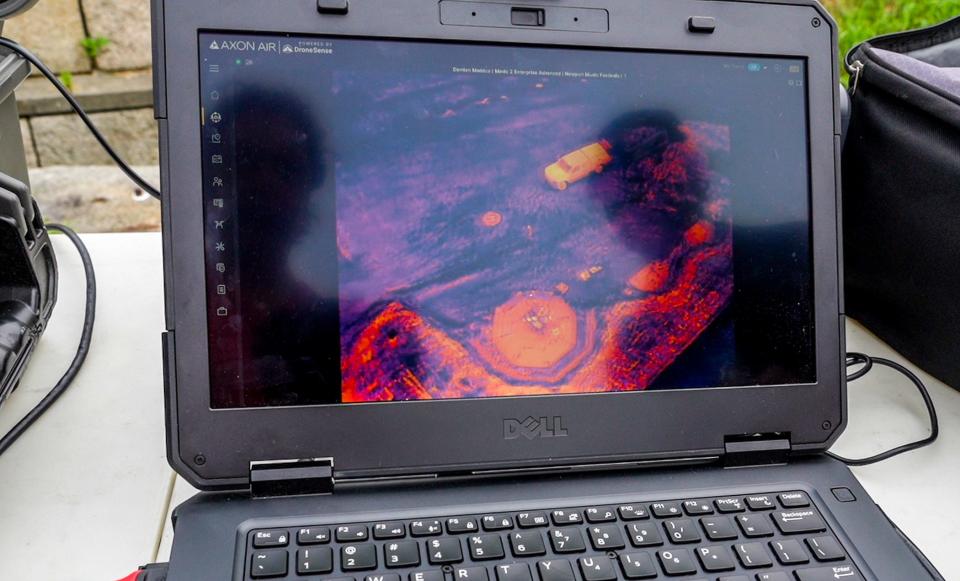
The school's administrators asked police to help them search for the boy.
A wooded area nearby was an obvious place to search. The department's drone quickly surveyed the area, said Oates.
A more traditional on-the-ground search would have taken 10 searchers 30 to 60 minutes, Oates said.
So as the drone did its work, Woonsocket could keep more patrol officers working the streets. The boy was found on Bellingham Street, which was quite a distance from the school.
Cranston's tactical team was at a suspected armed standoff on Ivanhoe Street in February when a man emerged from a home with something in his hand, said Cranston police Detective Capt. Vincent M. McAteer III.
'Everybody's scrambling': RI law enforcement agencies are grappling with a staff crisis
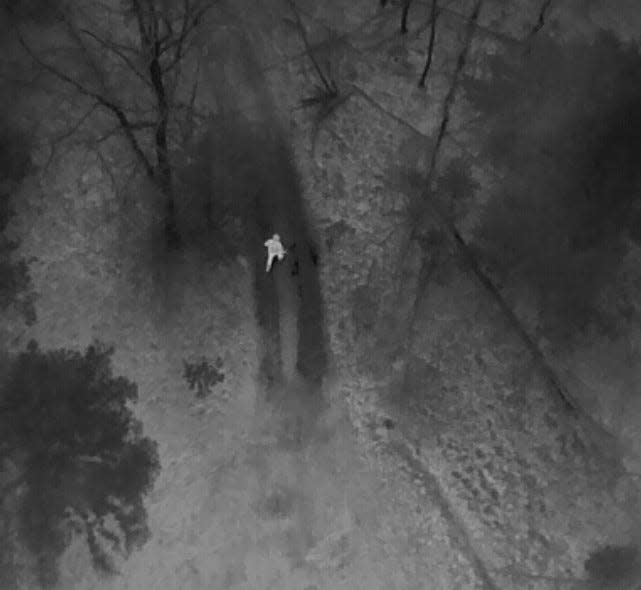
The drone operator, aided by a powerful camera, could see that the hand-held object was a cellphone and not a gun.
"Those are the types of things that drones are great for," McAteer said.
State police Sgt. Adam Kennett commands the troopers' drone team. Kennett also investigates automobile crashes.
Such investigations, increasingly, are benefiting from the same type of three-dimensional modeling technologies that detectives frequently work with at indoor homicide scenes. The modeling provides viewing features and tools for measuring and assessing that are far more useful than video or photographic imagery alone.
Outside, on a highway, Kennett's drone gathers data for such modeling.
The measurements hold up in court, said Kennett. In June, Kennett flew a drone at Subway in Smithfield after a car plowed through the sandwich shop.
At the scene of a major pileup on a highway, which can take many hours for police to investigate, Kennett and other troopers can often gather the modeling data they need with a drone far more quickly. Then they can restart traffic, he said.
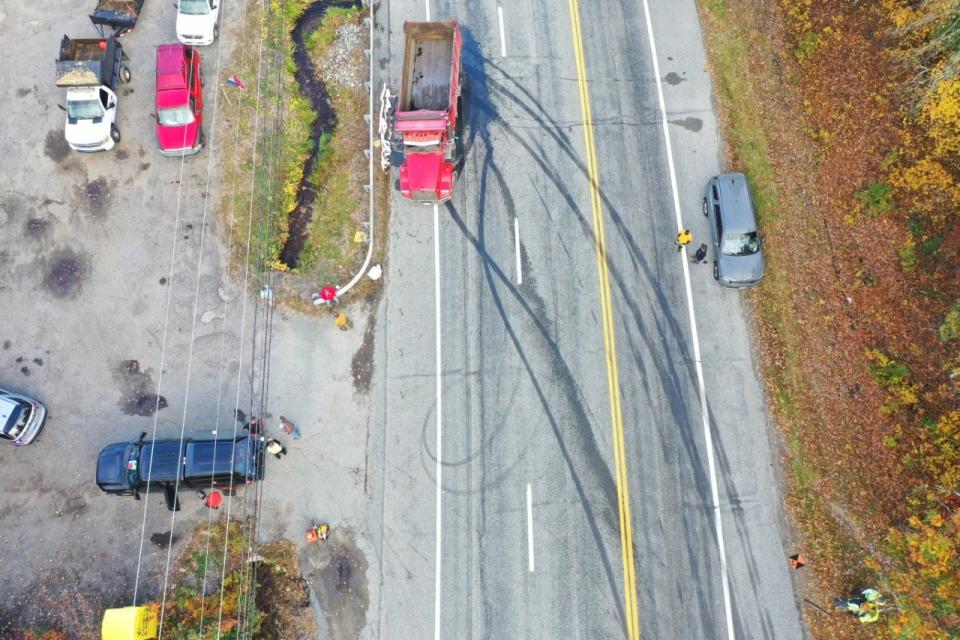
State and local police are investing in drone technology and training
At Fort Adams, the state police sergeant took stock of his team's overall drone use over the last two years.
Kennett stood at the "visualization station" they had set up on a raised and grassy fortification just outside the main walls of Fort Adams.
After two years of working with drones, Kennett sees promising roles for the devices in one public safety scenario after another, from tactical situations to rescues.
Police drones, he acknowledged, still aren't available in many first-response situations. That's because the copters are not yet minutes away from every emergency or crime scene.
More: Providence is moving to reduce police overtime. Here's how
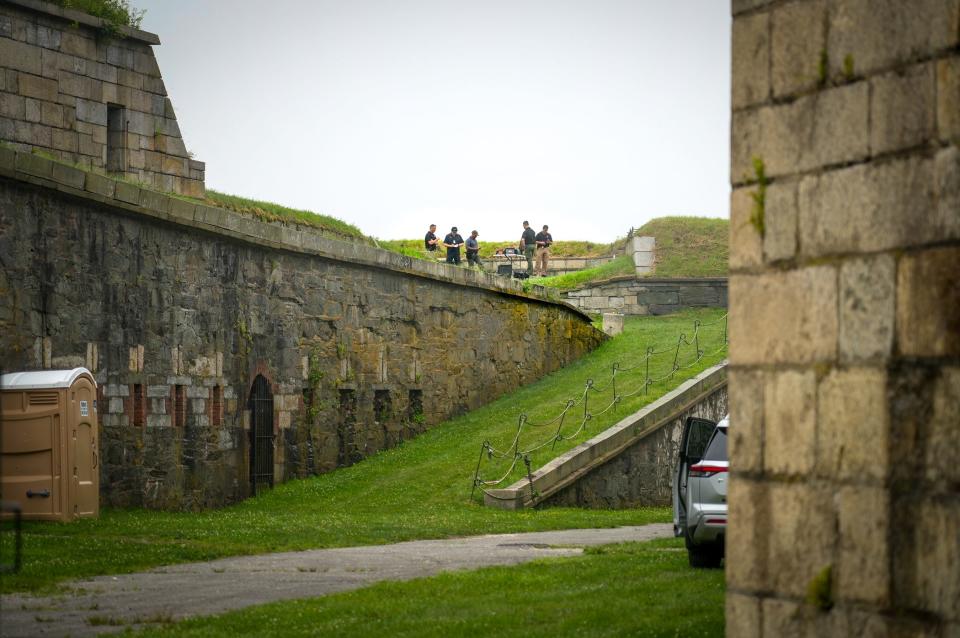
But state and local police are training more officers. Kennett's team includes a trooper who works an overnight shift.
The team's Mavic 2 Enterprise Advanced drone, which boasts high-end camera technology, can take to the sky in a minute or less, Kennett said.
Once the unit is on scene, its largest drone, the Matrice 300 RTK, is ready for action in about three minutes.
Versions of the Matrice drone are operating on battlefields in Ukraine.
In Rhode Island, the state police's Matrice can deliver items such as a cellphone, flashlights or a flotation aid. It has a speaker and a spotlight.
"This is really our lifesaver," Kennett said.
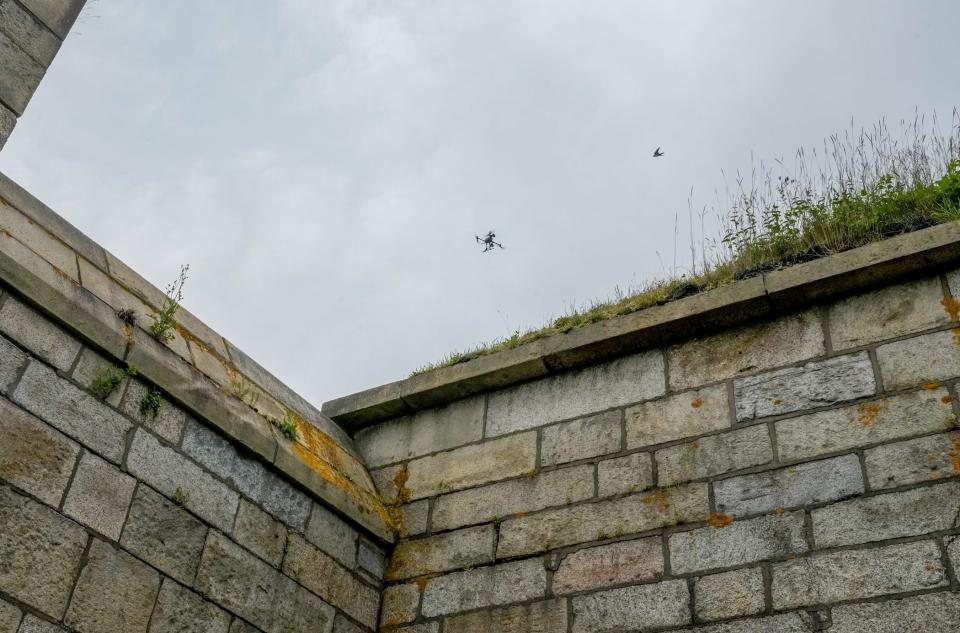
The airframe alone costs $12,000, said Kennett, who estimated the cost of the overall setup at about $30,000.
The drone's China-based manufacturer, DJI, boasts that the Matrice 300 RTK can fly to a height of 5,000 meters.
Kennett doesn't doubt this. But he points out that federal regulations governing commercial drone pilots, known as FAA Part 107, limit the flight ceiling to 400 feet.

As drone use increases, so do potential hazards
Across the United States, public safety organizations are embracing drones.
Someday, historians might rate the significance of the change on par with the incorporation of motor vehicles and radios into police operations.
In 2020, a researcher at Bard College documented that at least 1,578 public safety entities in the United States possessed drones; 500 of those agencies had acquired drones since 2018, the study said.
The 2020 study, which acknowledged that its drone counts were likely incomplete, documented just two agencies with drones in Rhode Island at the time and only 82 agencies across New England.
The Journal has not documented the total number of police drones in Rhode Island for this story. But some of the state's largest police agencies have been using drones for two years now.
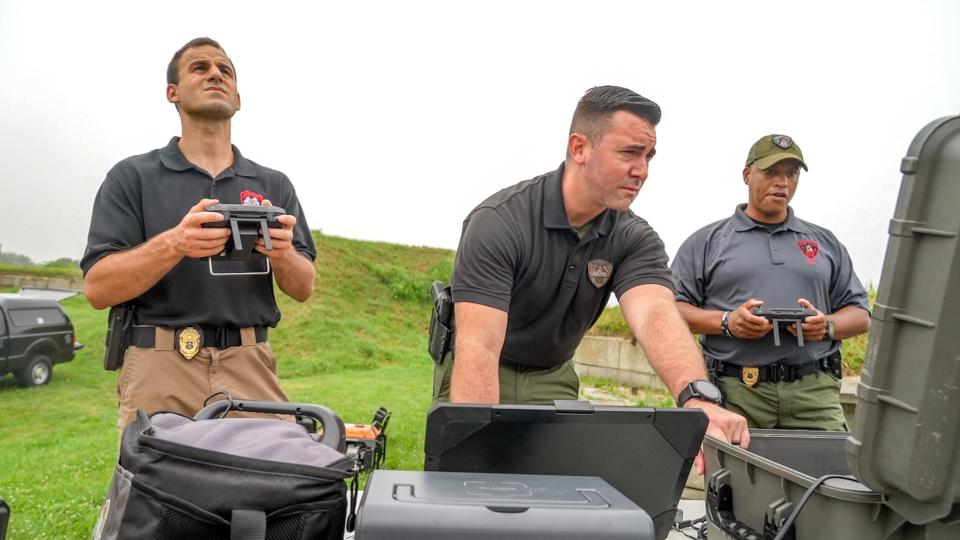
Providence police have had drones for at least four years, Potter said. The department has three certified flyers, he said.
The Cranston and Woonsocket police departments established their drone units in 2021.
Woonsocket has four certified pilots with a fifth in training, said Oates. Cranston has eight drone flyers and three drones, including a small indoor-capable copter from DJI's line of Mini drones, said McAteer.
The local trend corresponds with increased drone use – serious use – in business, government and military operations around the world.
The proliferation of drones, both recreational and professional, can enhance safety. It can also create public safety hazards.
At the start of the Ocean Race in Newport in May, state police were aware that three conventional helicopters would fly through at low altitude.
They worried about collisions between recreational drones and helicopters with people in them.
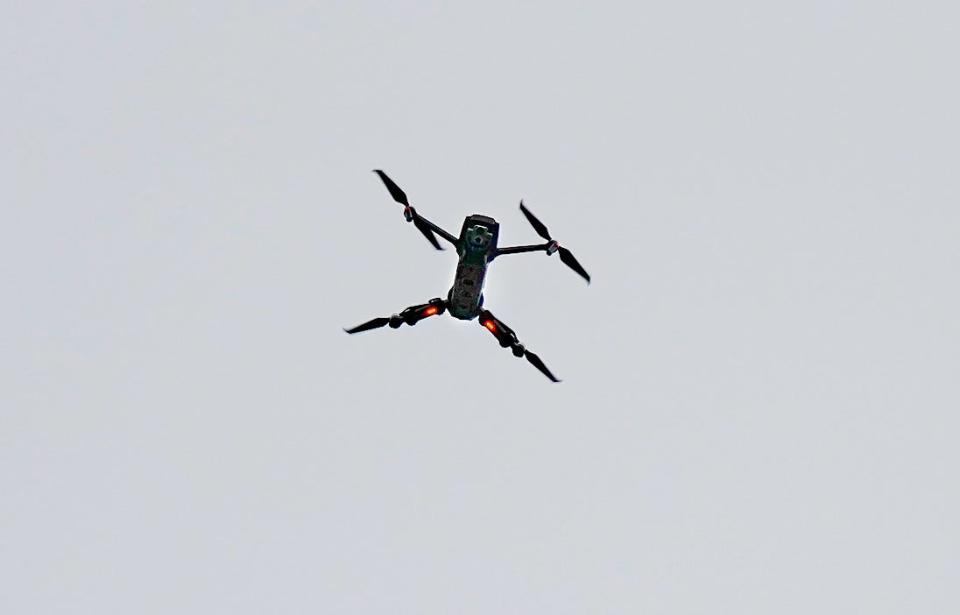
So they sent their drones on an outreach mission to spectators and boaters, warning them – via drone – to keep their private rotor machines out of the helicopters' flight path.
Kennett and his team provide what he describes as an "overwatch" service at events such as the Newport Folk Festival and Bristol's Fourth of July festivities.
With their cameras, the pilots can almost immediately focus on a reported problem at an event and potentially provide observations as security or troopers on the ground move to the location.
Last weekend, Kennett said the drone pilots flew their preplanned routes at the folk festival, avoiding paths directly over the crowd.
Again, other drones, flown from boats, drew attention. Kennett said the troopers worked with patrols on the water to warn recreational flyers.
What regulations govern drone operations for law enforcement?
State troopers are prepared to make arrests and launch investigations based on law-breaking they might see aerially via their drone cameras.
Kennett emphasizes that drone-flying troopers are governed by the same constitutional requirements as other police officers under the Fourth Amendment.
If the law requires it, he said, they will secure a warrant to gather information with a drone.
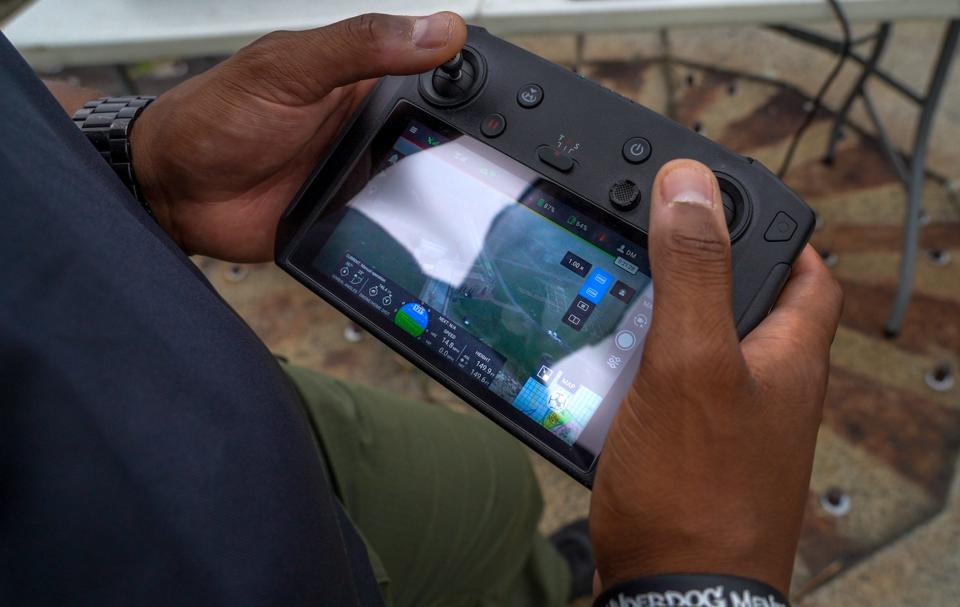
Also, Kennett said he is aware of past precedents where courts allowed law enforcement, including the U.S. Drug Enforcement Administration, to support specific probes with aerial information-gathering missions.
But if state police should need a bird's-eye vantage point to see something illegal in someone's yard and they can't see it any other way, the drone unit's policy calls for securing a warrant first, he said.
The drones' flights, he said, are tracked in a data system, Dronesense, and the information is subject to Rhode Island's Public Records Act.
Once certified, the police remote pilots are also governed by FAA regulations under Part 107, which covers all drone-flying that isn’t recreational. Rhode Island had 1,797 registered drone pilots under Part 107 in 2022, according to the FAA.
Police drone pilots can apply to the FAA for waivers from certain limitations within the Part 107 rules.
Nine public safety agencies in Rhode Island have secured such waivers, according to information provided to The Journal by the FAA. Police drone pilots are also governed by their department's policies.
ACLU: Drones increase potential for privacy intrusions
The specter of aerially guided law enforcement surveillance in the sky has been a longtime concern of some civil liberty advocates.
Some critics say that camera-equipped police drones pose many of the same privacy and legal issues that ground-based police camera devices pose.
In an interview, Hannah Stern, a policy associate for the American Civil Liberties Union of Rhode Island, focused much of her criticism on the potential for drone-supported police operations that gather reams of data on people and businesses.
More: Who's watching you? New surveillance cameras make inroads in RI, raising privacy concerns
Kennett, Winquist, Oates and others say they haven't deployed drones on such random data-collection missions.
South Kingstown police Chief Matthew C. Moynihan, who is working out his department's policy for its police drones, said police should support vigorous public discussions about their own use of drone technology.
Stern said civil liberties advocates are in the dark until they see written policies.
"Until we have those,” she said, “we really don't know what type of information, or how much information, is being gathered by these technologies."
Cranston's police chief, Winquist, has been a pioneer of Rhode Island police operations that employ license plate reading devices.
The city's police drone policy establishes a range of specific situations for the use of Unmanned Aircraft Systems.
Such situations include armed standoffs as well as certain other high-risk situations where police are entering a house with a warrant, Winquist said.
Winquist told The Journal the policy directs Cranston police to seek a warrant before they fly a drone mission that aims to collect evidence of wrongdoing, or if the flight might intrude on "reasonable expectations of privacy."
"We understand that this is an emerging investigative tool," said McAteer.
"We will always follow the Fourth Amendment," he added.
This article originally appeared on The Providence Journal: Police drones in RI: Revolutionary tool with potential privacy risks

